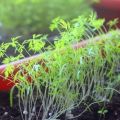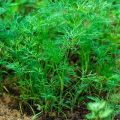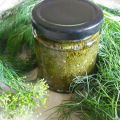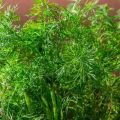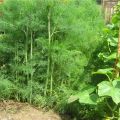How to properly plant dill in open ground with seeds so that it sprouts quickly
Among the variety of greens, dill occupies one of the main positions in the list of herbs. The plant is used to add new flavors and decorate dishes. To get a stable harvest of greens, it is important to know how to properly plant dill and care for the crop. Subject to the rules growing dill will have a number of useful properties and pleasant taste characteristics.
Required conditions for growing dill
Dill is an unpretentious plant and requires a minimum of growing conditions. Including:
- It is better to plant a plant in a sunny area, since germination will be fast only in bright light.
- Sowing greens should be on land where fertilizers such as dolomite flour and lime have not previously been used.
- When growing a plant with a continuous method in a greenhouse or on open beds, it is enough to scatter seeds over the entire ground and treat the surface with a rake for embedding, then start the sprayers or independently make abundant watering.
- Plants planted close to dill can block light and disrupt the root system.
- In the event of diseases and pests, only agrotechnical and mechanical control methods should be used. A key role in eliminating dangerous third-party factors is assigned to the competent alternation of crops during planting.
- Dill cultivation is possible between other crops.
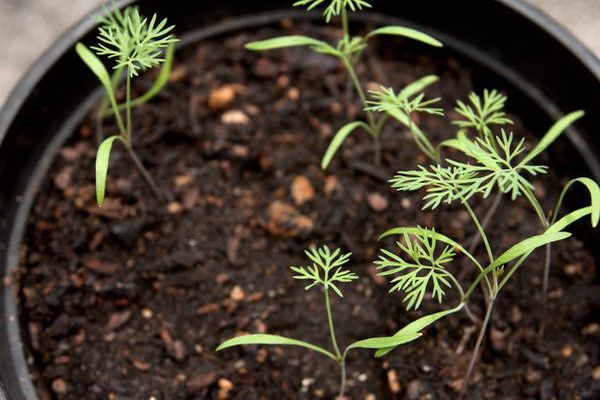
The time of the appearance of the first shoots after planting in the spring directly depends on the atmospheric conditions and the correct preparation of the seeds. Under favorable circumstances, seedlings begin to germinate a week after sowing.
Planting dates in different regions
Due to the ability of dill to tolerate ambient temperatures down to -4 degrees, it is better to plant seeds in mid-spring, after the snow melts. Seed growth is possible at temperatures above 3 degrees, and the optimal conditions are considered to be 15–20 degrees Celsius. When grown in central Russia, it is recommended to plant dill at the end of April, when the risk of late frosts is low.

In the northern regions, winter sowing in open soil is allowed. For this, the land is prepared for planting 2 weeks before frost, and during the first frost, seeds are introduced for wintering. This method makes it possible to get an early harvest of dill.
Seed preparation
Seeds overwintered in open soil germinate more actively than those planted in spring. The presence of essential oils in the composition slows down growth, therefore, before starting sowing, you need to properly prepare the seeds.To disinfect and accelerate the emergence of sprouts, the seeds are wrapped in gauze and soaked in water for 3 days. The initial water temperature should be around 50 degrees. To make the sprouts appear faster, the soaking water should be changed several times a day.
After water treatment, the seeds must be allowed to dry by placing them on gauze bags and sprinkling with steamed sawdust. Before direct sowing, it is recommended to additionally dry the seeds in the fresh air for half an hour.
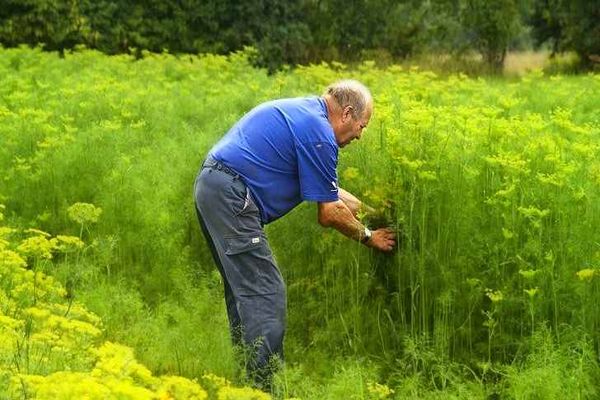
Ideal for planting in open ground
Like many greens, dill is best grown outdoors. Since the crop needs light to grow well, it is best to choose a sunny area. Southern territories are ideal.
When choosing the optimal place for sowing, it is also important to take into account the temperature, which should be above 15 degrees during the period of active growth. At the same time, constant exposure to ultraviolet rays can lead to soil drought, which will require regular watering.
Neighborhood preferences
Dill does not require spatial isolation from other plants, therefore, it is allowed to grow greens in close proximity to tomatoes, cucumbers, zucchini and other vegetable crops. It is not recommended only to plant the plant in the beds where celery was harvested in the previous season.
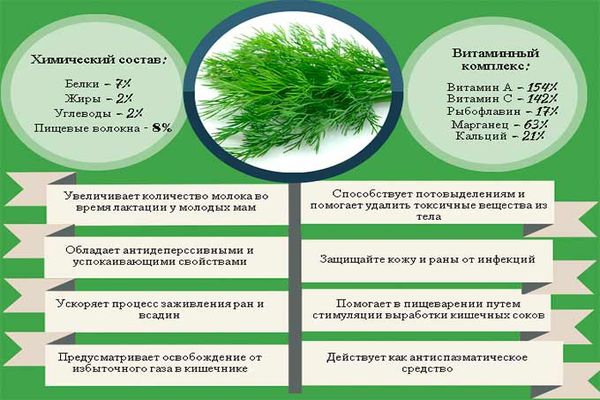
In order not to create unfavorable conditions for neighboring crops, a place should be left between the seedlings. Greens should not be near the stalks of vegetables, as otherwise it will take away an excess amount of nutrients and moisture.
How to choose a place for planting and prepare a garden bed?
One of the important factors affecting the yield of dill is the correct planting site. When selecting terrain for beds, you should avoid darkened areas and areas near tall bushes. You should also avoid areas with waterlogged soil.
Having decided on a place for cultivation, it is necessary to prepare the soil for sowing. In the autumn period, you should first dig up the soil and carry out the treatment with fertilizers. One square of land will take half a bucket of humus. Mullein or bird droppings are also suitable as top dressing. To ensure free passage of oxygen and water to the seedlings, all beds must be thoroughly loosened in mid-spring before planting. 1-2 days before sowing, it will remain to water the soil for its shrinkage.
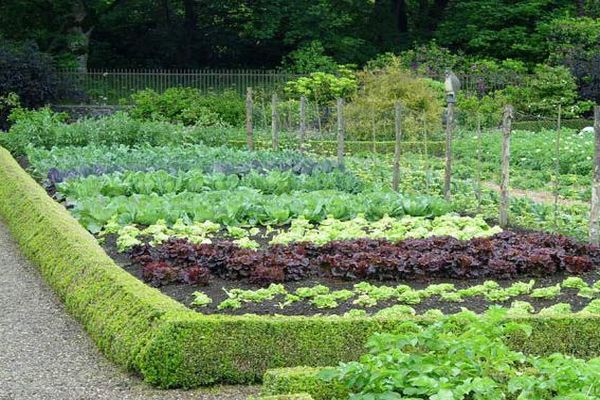
What kind of soil does dill like?
For growing large and aromatic greenery, neutral soil or one with a low acidity is better suited. The soil should be loosened and contain a number of useful trace elements. Before sowing, it is not necessary to treat the soil with fresh manure or compost, but the presence of humus in the soil can speed up the ripening process. If the precursors of dill were cucumbers, cabbage or similar crops, then after them the soil will be saturated with organic matter.
During growth, the greens accumulate nitrates, so the soil should not be fertilized with mineral fertilizers. Nitrogen solutions are also completely excluded. To ensure even growth, the soil must be moderately moist. Excess moisture or severe drought should not be allowed. Another preference for soil is a low number of pests during prior planting.
Planting culture
Before sowing dill, prepare holes about 2 cm deep. The row spacing should be 15–20 cm. Furrows can be made along or across the beds. For sowing dill, a thickened planting scheme is suitable, in which 1 g of seeds is required per 1 square of land, and when sowing in the fall - 2 g.
Before planting seeds in the holes, you need to water the soil with water.After sowing, the furrows are covered with earth.
Watering is not required immediately after planting, since dry soil serves as a mulch and allows water to remain for a long time. Dill can be sown in small batches every 2 weeks to always have fresh greens available.
The next year after growing dill, it is recommended to plant eggplants, lettuce, garlic, tomatoes, cucumbers or crops similar in characteristics to the same beds. The soil after the greenery will contain a minimum amount of pathogenic spores, which will have a positive effect on the quality and quantity of further harvest.


